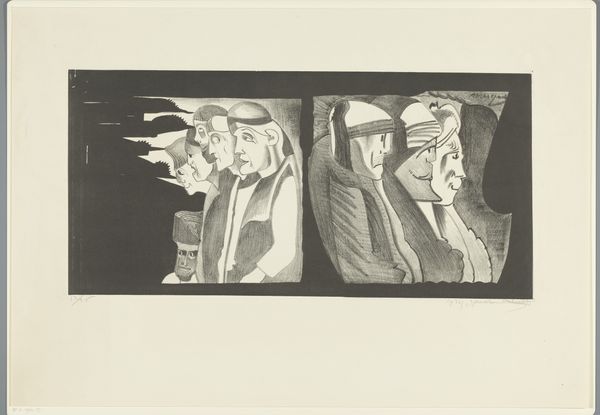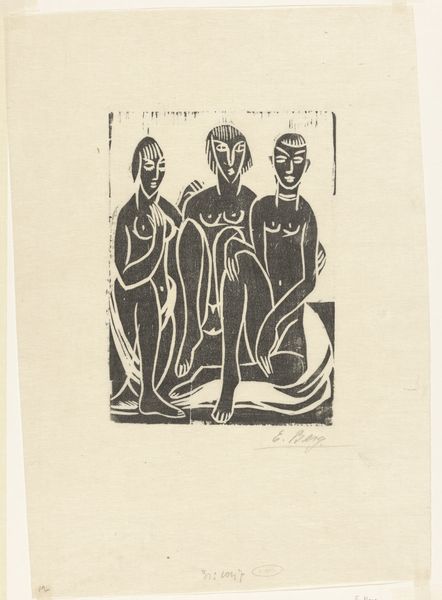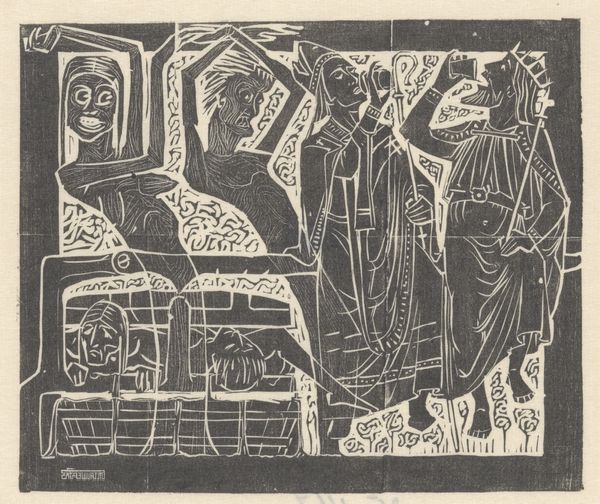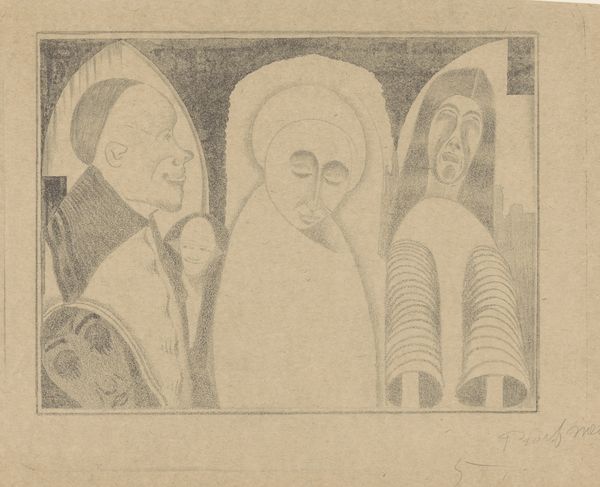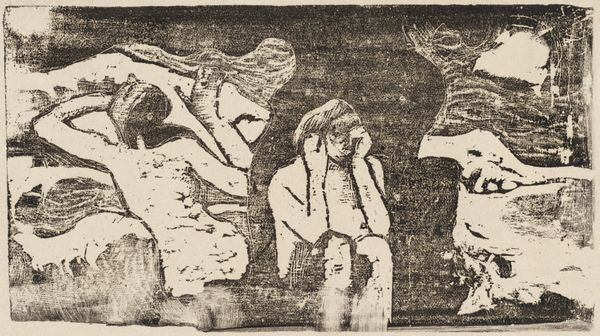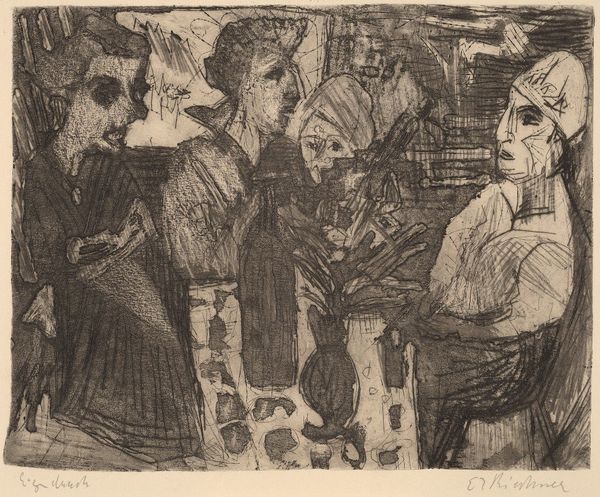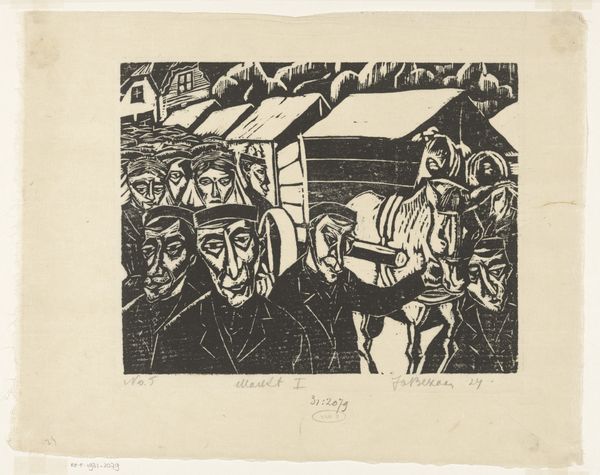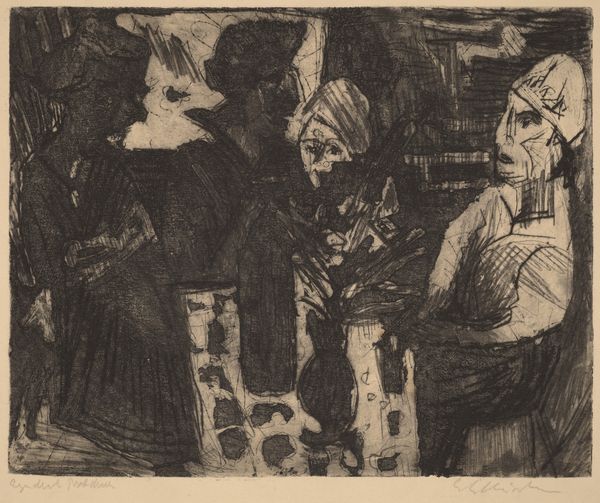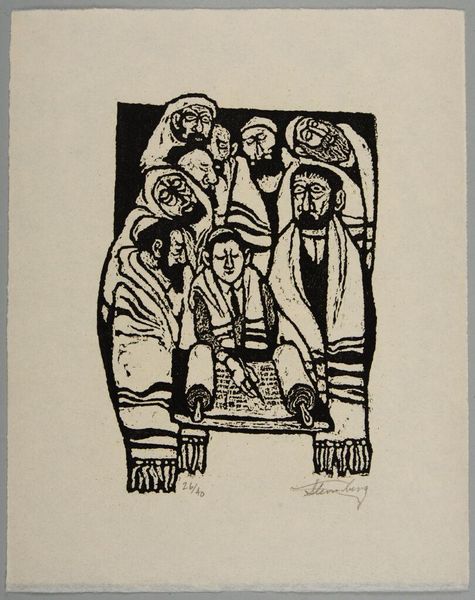
drawing, graphic-art, print, ink, woodcut
#
portrait
#
drawing
#
graphic-art
# print
#
figuration
#
ink
#
expressionism
#
woodcut
Dimensions: height 215 mm, width 310 mm
Copyright: Rijks Museum: Open Domain
Curator: Right, let’s discuss this woodcut. It’s titled "Four Stylized Human Figures in a Row," made around 1930 by Samuel Jessurun de Mesquita, currently held at the Rijksmuseum. Editor: Well, immediately, those faces—the sheer intensity! There’s such a dark humor in the linework, it’s both grotesque and fascinating. It’s got that wonderful raw energy you get with expressionist prints, but I wonder if it wasn’t something more sinister afoot? Curator: Given de Mesquita's history, one can't ignore the socio-political currents. His work, especially pieces like this that engage with figuration, were being produced during a period of increasing social unrest and right-wing ascendance. The use of woodcut—a more "primitive," labor-intensive technique—is notable, connecting to the German Expressionist movement's revival of earlier methods as a response to industrial alienation. The social context cannot be understated here. Editor: You're right, it echoes that pre-war unease you find in German Expressionism – like Beckmann or Dix. There's something nightmarish, almost allegorical in how they’re lined up, and how the inking makes them look like they're emerging from shadow. They remind me of actors on a very minimalist, moody stage, waiting to say their lines in a drama no one wants to see. It has such a dark emotional effect for such a minimal amount of detail! Curator: Exactly. The technique lends itself to a certain brutality, yes, but it is the roughness that also creates accessibility through an economical process of production, as a common visual language. The use of readily available material brings the theme closer to the observer. The artist utilized the restrictions of medium, printing processes, and materials availability to create something meaningful to be seen and purchased by average, rather than the upper-class consumers. Editor: That focus on the human element feels so very relevant still. But knowing how his life tragically ended during the Holocaust casts such a pall over these characters, you know? Does that change how we should view his body of work and, in particular, these stark images? Curator: It contextualizes it, absolutely. The work gains another layer, one of foreboding. But more crucially, one should assess not simply the 'why' but also 'how'—how these emotions and historical anxieties were made into tangible form. By understanding these decisions related to production, distribution, and interpretation, we unlock a far deeper engagement. Editor: Yes. In this raw, honest process, these four figures, however grotesque or stylized, still capture something inherently, enduringly human in ink. Curator: Indeed, a striking statement on materials and process intertwining with meaning.
Comments
No comments
Be the first to comment and join the conversation on the ultimate creative platform.
